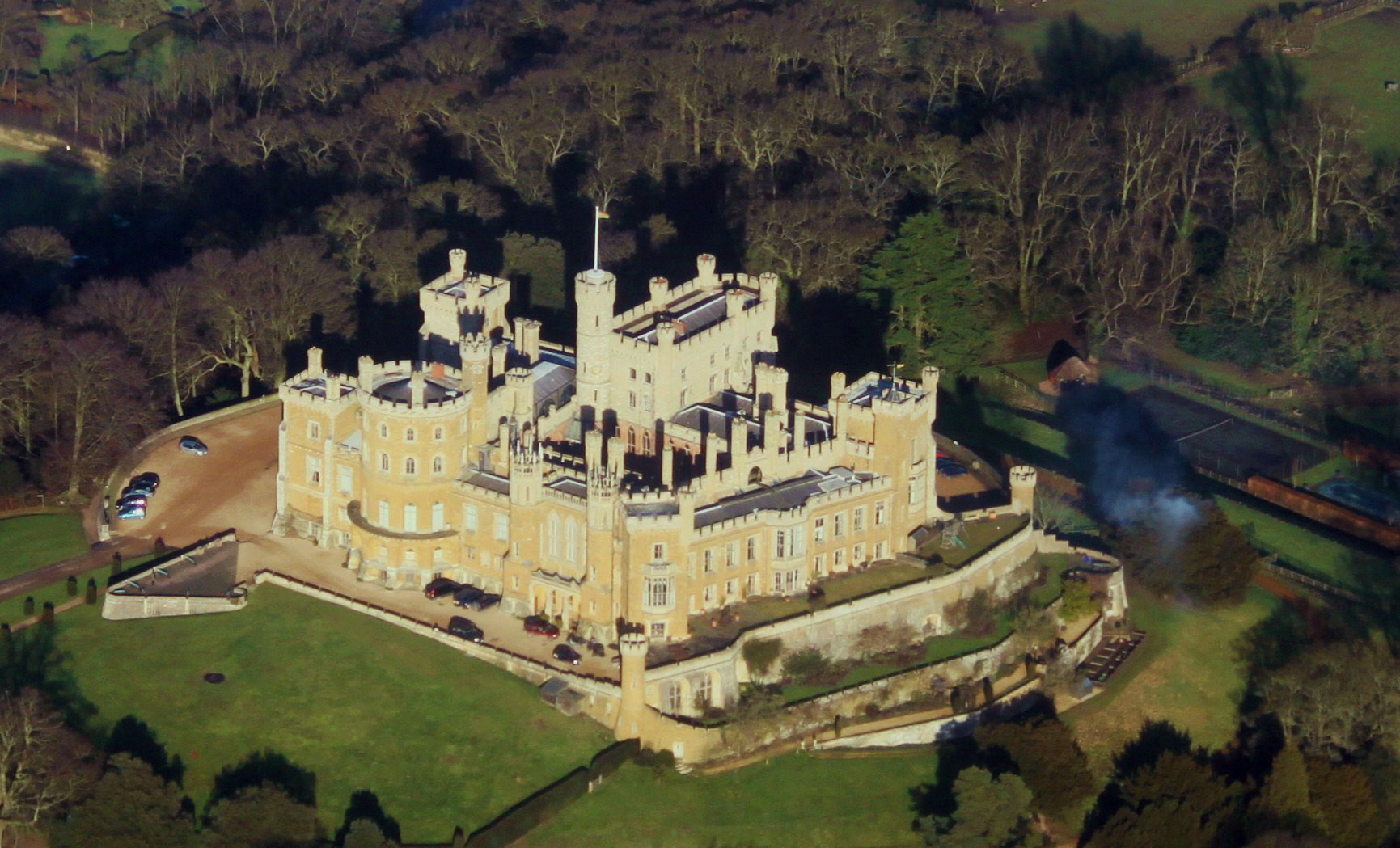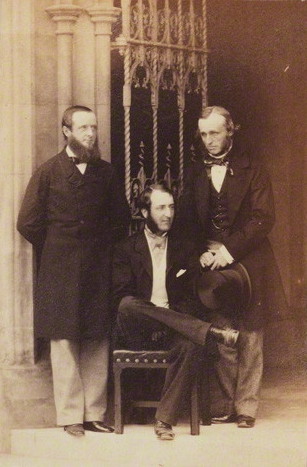by Susan Flantzer © Unofficial Royalty 2018

Credit – Wikipedia
Lord Guildford Dudley was the husband of Lady Jane Grey who was Queen of England for nine days, from July 10 – July 19, 1553. Born around 1535, Guildford was the youngest surviving son of John Dudley, 1st Duke of Northumberland, and Jane Guildford.
Guildford had twelve siblings but only seven survived childhood:
- Henry Dudley (1525 – 1545), married Winifred Rich, no children; died at the Siege of Boulogne
- Thomas Dudley (circa 1526 – 1528), died in early childhood
- John Dudley, 2nd Earl of Warwick (circa 1527 – 1554), married Anne Seymour, daughter of Lord Protector Edward Seymour, Duke of Somerset, no children; condemned to death for signing the letters patent in which his sister-in-law Lady Jane Grey was declared Queen of England, was reprieved but died shortly after his release from the Tower of London
- Ambrose Dudley, 3rd Earl of Warwick (circa 1528 – 1590), married (1) Anne Whorwood, had one son who died in infancy (2) Elizabeth Tailboys, 4th Baroness Tailboys, no children (3) Anne Russell, no children; like his brother John, was condemned to death but reprieved
- Mary Dudley, Lady Sidney (1531 – 1586), married Sir Henry Sidney, had seven children including the poets Sir Philip Sidney and Mary Herbert, Countess of Pembroke; served as lady-in-waiting to Queen Elizabeth I
- Henry Dudley (circa 1531 – 1557), married Margaret Audley, no children; like his brother John, was condemned to death but reprieved, killed in the Battle of St. Quentin
- Robert Dudley, 1st Earl of Leicester (1532 – 1588), married (1) Amy Robsart, no children, suspicious death by falling down a flight of stairs (2) Lettice Knollys, had one son; Robert like his brother John, was condemned to death but reprieved, favorite of Queen Elizabeth I
- Charles Dudley (1537–1542), died in childhood
- Katherine Dudley, Countess of Huntingdon (1544 – 1620), married Henry Hastings, 3rd Earl of Huntingdon, no children
- Temperance Dudley (died in 1552), died in childhood
- Catherine Dudley, died in childhood
- Margaret Dudley, died in childhood

Coat of Arms of the Dudley Family; Credit – By Sodacan – Own work; Based on [1], CC BY-SA 4.0, https://commons.wikimedia.org/w/index.php?curid=38506101
In 1552, Guildford’s father tried to marry him to Margaret Clifford, the only surviving daughter of Henry Clifford, 2nd Earl of Cumberland and Lady Eleanor Brandon, the younger daughter of Charles Brandon, 1st Duke of Suffolk and Mary Tudor, daughter of King Henry VII of England and Elizabeth of York. King Edward VI was in favor of the marriage but Margaret’s father was against it because Guildford was the only a duke’s younger son.

The Streatham Portrait of Lady Jane Grey; Credit – Wikipedia
In the spring of 1553, Guildford became engaged to sixteen-year-old Lady Jane Grey who was closer to the English throne than Margaret Clifford. Jane was the eldest of the three daughters of Henry Grey, 1st Duke of Suffolk and Lady Frances Brandon. Lady Frances was the daughter of King Henry VIII’s younger sister Mary Tudor and Charles Brandon, 1st Duke of Suffolk. Frances was the elder of her parents’ two surviving children.
On May 25, 1553, three weddings were celebrated at Durham Place, the Duke of Northumberland’s London home. Lord Guildford Dudley married Lady Jane Grey, Guildford’s sister Lady Katherine Dudley married Henry Hastings, the Earl of Huntingdon’s heir, and Jane’s sister Lady Catherine Grey married Henry Herbert, the heir of the Earl of Pembroke.
In January 1553, King Edward VI became ill with a fever and cough that gradually worsened. It is probable that he had tuberculosis. By May 1553, the royal doctors had no hope that the king would recover and John Dudley, 1st Duke of Northumberland and Lord Protector, became to scheme for a succession that would benefit him.
As King Edward VI lay dying in the late spring and early summer of 1553, the succession to the throne according to the Third Succession Act looked like this, and note that number four in the succession was the Duke of Northumberland’s daughter-in-law.
1) Mary, daughter of Henry VIII and Catherine of Aragon
2) Elizabeth, daughter of Henry VIII and Anne Boleyn
3) Duchess of Suffolk (born Lady Frances Brandon), daughter of Mary Tudor
4) Lady Jane Grey, daughter of Frances Brandon
5) Lady Catherine Grey, daughter of Frances Brandon
6) Lady Mary Grey, daughter of Frances Brandon
7) Lady Margaret Clifford, daughter of Countess of Cumberland (born Lady Eleanor Brandon), daughter of Mary Tudor
King Edward VI’s death and the succession of his Catholic half-sister Mary would spell trouble for the English Reformation. Many on Edward’s Privy Council feared this, including the Duke of Northumberland. What exact role the Duke of Northumberland had in what followed is still debated, but surely he played a big part in the unfolding of the events. The king opposed Mary’s succession not only for religious reasons but also because of her illegitimacy and his belief in male succession. He also opposed the succession of his Protestant half-sister Elizabeth for reasons of illegitimacy and belief in male succession. Both Mary and Elizabeth were still considered to be legally illegitimate.
King Edward VI composed a document “My devise for the succession” in which he passed over his half-sisters and the Duchess of Suffolk (Frances Brandon). Edward meant for the throne to go to the Duchess’ daughters and their male heirs. The Duke and Duchess of Suffolk were outraged at the Duchess’ removal from the succession, but after a meeting with the ailing king, the Duchess renounced her rights in favor of her daughter Jane. Many contemporary legal experts believed the king could not contravene an Act of Parliament without passing a new one that would have established the altered succession. Therefore, many thought that Jane’s claim to the throne was weak. Apparently, Jane did not have any idea of what was occurring.

Lady Jane Grey Prevailed on to Accept the Crown by Charles Robert Leslie, 1827. The painting depicts Lady Jane Grey with her husband Lord Guildford Dudley; Credit – Wikipedia
After great suffering, fifteen-year-old King Edward VI died on July 6, 1553, most likely from tuberculosis. On July 9, Jane was told that she was Queen, and reluctantly accepted the fact. She was publicly proclaimed Queen with much pomp after Edward’s death was announced on July 10. Queen Jane made a state entry into the Tower of London. Her mother carried her train and the rather short Queen wore raised shoes to give her height. Jane showed some spirit when she refused to allow her husband Guildford to be proclaimed king.
The Duke of Northumberland had to find Mary and hopefully capture her before she could gather support. However, as soon as Mary knew her half-brother was dead, she wrote a letter to the Privy Council with orders for her proclamation as Edward’s successor and started to gather support. By July 12, Mary and her supporters had assembled a military force at Framlingham Castle in Suffolk. The Duke of Northumberland set out from London with troops on July 14. The nobility was incensed with Northumberland and the people, for the most part, wanted Mary as their Queen, not Jane. In Northumberland’s absence, the Privy Council switched their allegiance from Jane to Mary and proclaimed her Queen on July 19, 1553. Mary arrived triumphantly in London on August 3, 1553, accompanied by her half-sister Elizabeth and a procession of over 800 nobles and gentlemen.
Jane and Guildford had been in residence at the Tower of London following Jane’s proclamation as Queen. They were separated and remained at the Tower. After a few days, Guildford’s father John Dudley, Duke of Northumberland and Guildford’s four surviving brothers were imprisoned at the Tower of London along with Jane’s father Henry Grey, 1st Duke of Suffolk. All the men were eventually attainted and condemned to death. The Duke of Northumberland was executed on August 22, 1553.
Queen Mary appeared as if she was going to be lenient but the Protestant rebellion of Thomas Wyatt the Younger in January 1554 sealed Jane’s fate, although she had nothing to do with the rebellion. Wyatt’s Rebellion was a reaction to Queen Mary’s planned marriage to the future King Philip II of Spain. Lady Jane Grey and Lord Guildford Dudley were executed on February 12, 1534. Jane’s father, the Duke of Suffolk, was executed on February 23, 1554.
The day before their execution, Guildford asked for a last meeting with his wife but Jane refused saying that it “would only … increase their misery and pain, it was better to put it off … as they would meet shortly elsewhere, and live bound by indissoluble ties.” About ten o’clock in the morning of February 12, 1554, Guildford was led to Tower Hill and gave a brief speech to the assembled crowd, as was customary. He knelt down, prayed, and asked the people to pray for him. Guildford was killed with a single blow of the ax and his body was then taken to the Chapel of St. Peter ad Vincula in the Tower of London. Jane was beheaded within the precincts of the Tower of London within an hour and was buried next to her husband in the Chapel of St. Peter ad Vincula within the Tower of London.

Memorial in the Chapel of St Peter ad Vincula at the Tower of London; Credit – www.findagrave.com
Guildford’s brothers John, Ambrose, Henry, and Robert Dudley remained imprisoned at the Tower of London in the Beauchamp Tower where they made carvings in the walls. John carved their heraldic devices with his name “IOHN DVDLI” which can still be seen. During 1554, Guildford’s mother Jane Dudley and his brother-in-law Sir Henry Sidney were busy befriending the Spanish nobles around Queen Mary’s new husband, Prince Philip of Spain, hoping they would use their influence to have the Dudley brothers released. In October 1554, John, Ambrose, Henry, and Robert Dudley were released due to their efforts.
This article is the intellectual property of Unofficial Royalty and is NOT TO BE COPIED, EDITED, OR POSTED IN ANY FORM ON ANOTHER WEBSITE under any circumstances. It is permissible to use a link that directs to Unofficial Royalty.
Works Cited
- En.wikipedia.org. (2018). John Dudley, 1st Duke of Northumberland. [online] Available at: https://en.wikipedia.org/wiki/John_Dudley,_1st_Duke_of_Northumberland [Accessed 28 Nov. 2018].
- En.wikipedia.org. (2018). Lord Guildford Dudley. [online] Available at: https://en.wikipedia.org/wiki/Lord_Guildford_Dudley [Accessed 28 Nov. 2018].
- Flantzer, S. (2016). King Edward VI of England. [online] Unofficial Royalty. Available at: https://www.unofficialroyalty.com/king-edward-vi-of-england/ [Accessed 28 Nov. 2018].
- Flantzer, S. (2013). Lady Jane Grey, Queen of England. [online] Unofficial Royalty. Available at: https://www.unofficialroyalty.com/july-10-daily-featured-royal-date/ [Accessed 28 Nov. 2018].
- Williamson, David. Brewer’s British Royalty. London: Cassell, 1996. Print.































